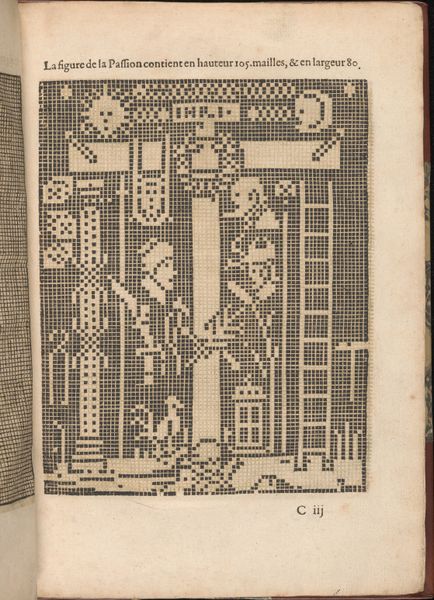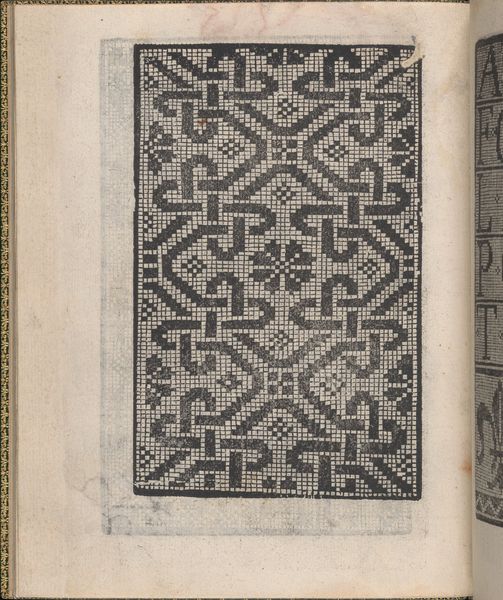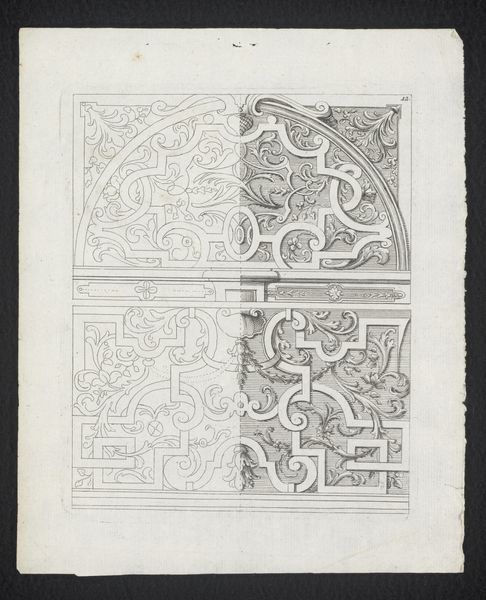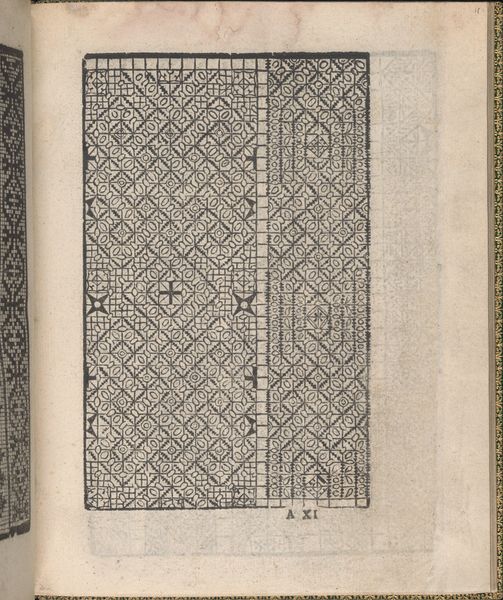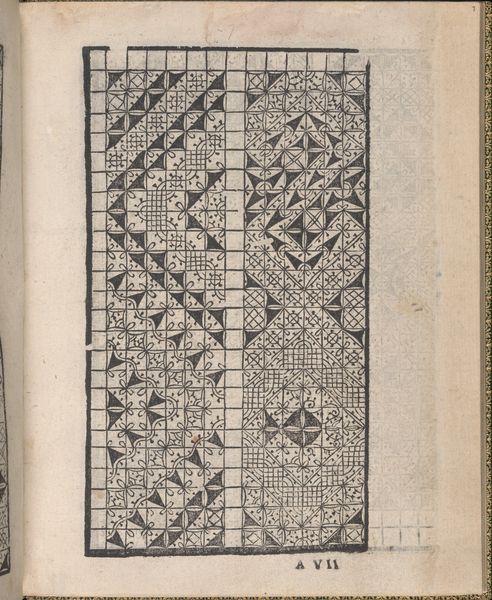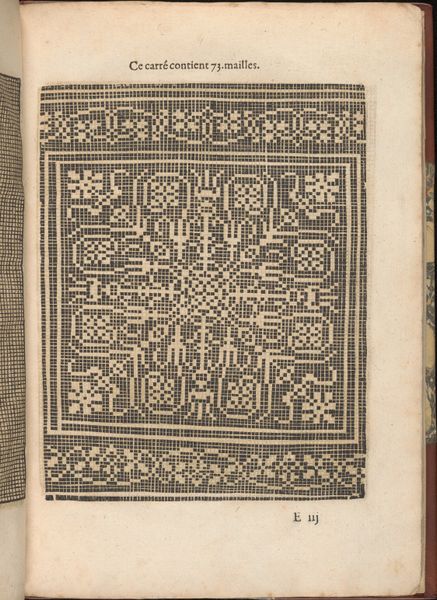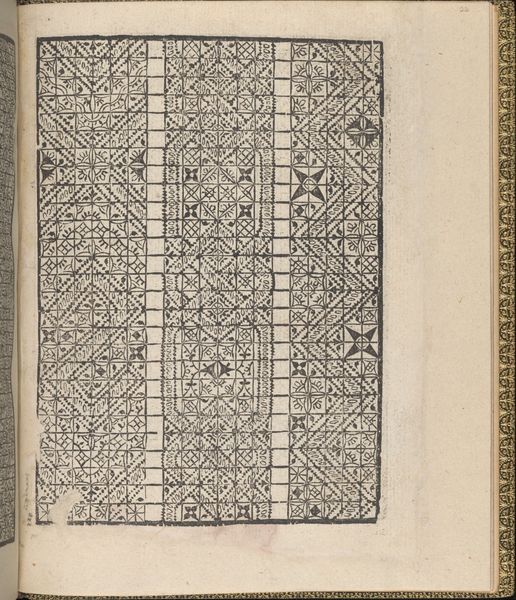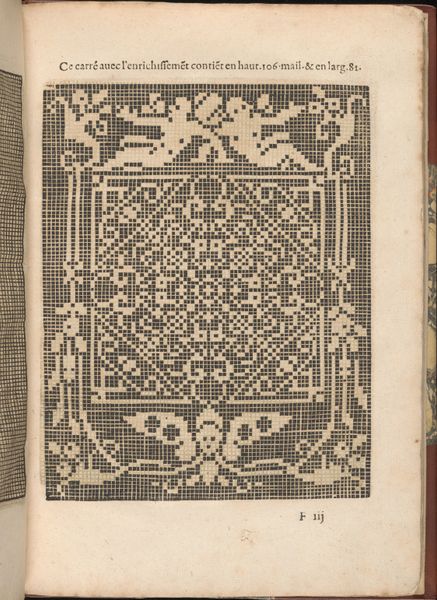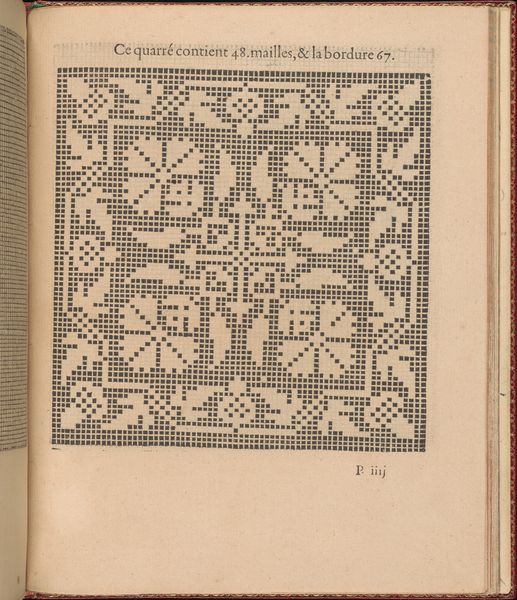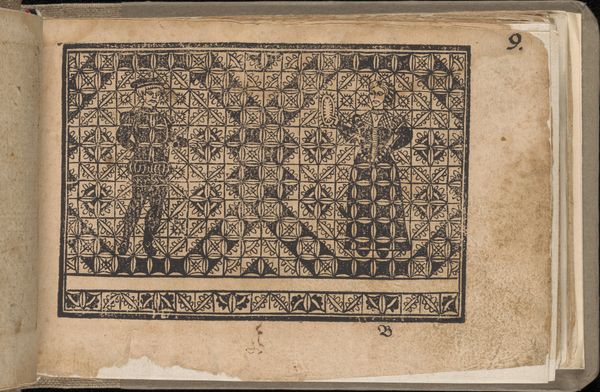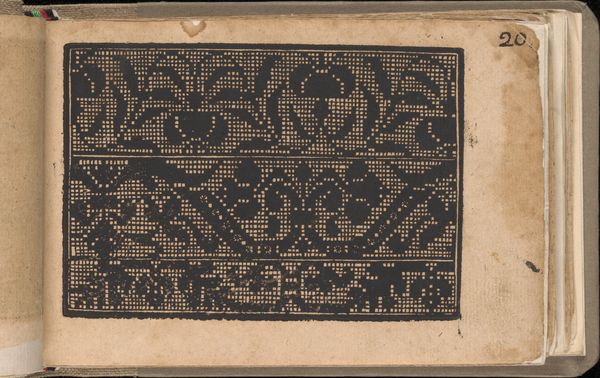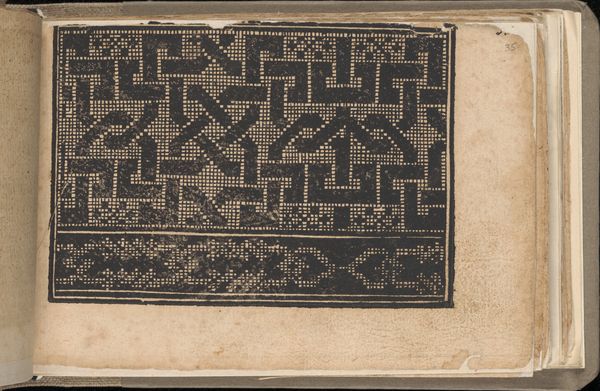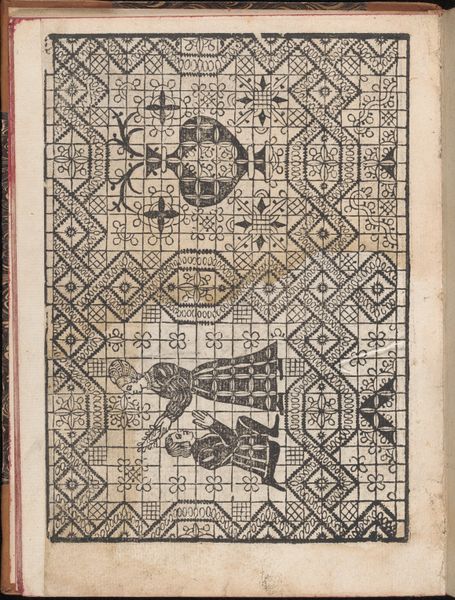
Vijf friezen gedecoreerd met rolwerk, cartouches en mascarons, geometrische patronen en reliëf 1593 - 1595
0:00
0:00
print, engraving, architecture
# print
#
11_renaissance
#
geometric
#
northern-renaissance
#
decorative-art
#
engraving
#
architecture
Dimensions: height 257 mm, width 188 mm
Copyright: Rijks Museum: Open Domain
Curator: This engraving, "Vijf friezen gedecoreerd met rolwerk, cartouches en mascarons, geometrische patronen en reliëf," was created by Wendel Dietterlin between 1593 and 1595. What stands out to you initially? Editor: Well, the immediate impression is one of elaborate intricacy. There’s a density to the design, almost claustrophobic, despite being clearly architectural in intention. Curator: Yes, it's a veritable cornucopia of motifs. Dietterlin's focus seems to be on showcasing an array of ornamental possibilities, drawn from classical vocabularies reinterpreted through a Northern Renaissance lens. What I find fascinating is the interplay between recognizable forms, such as the mascarons, and the purely geometric abstractions. How do you see this functioning within its historical context? Editor: It speaks to a culture increasingly aware of its past, yet eager to innovate. The geometric patterns could signal an emerging interest in scientific principles shaping design, even as the faces maintain that thread to the classical tradition that patrons expected in artwork of the era. But also, prints like this were critical tools. They democratized design. Suddenly, even far-flung artisans had access to the latest styles filtering down from elite circles. Curator: Absolutely, this print facilitates the spread of artistic styles and allows smaller artisan workshops the capability to emulate elite trends in building decor and other artwork. There’s a didactic quality, instructing in the correct application of ornament. The northern artists truly embrace patterns and intricacies in ways we don't see in Renaissance Italy for example. There's a tension, though, I think, between structure and a playful impulse, what would you say? Editor: I agree. I find that fascinating too - it almost anticipates later Baroque tendencies towards extravagance, pushing the boundaries of good taste and decorum that feels somehow different than what the Italian Renaissance stands for, but also that contrast may not be entirely unique given that print making enabled more far reaching design access across Europe. Curator: So, beyond being visually captivating, this engraving acts as a visual archive and design manual all in one. It underscores the increasing importance of print culture in disseminating artistic ideas. Editor: It truly captures a moment where tradition meets the drive for novelty, democratizing design. I find myself contemplating the next time I encounter ornamental features, recognizing the forces shaping their form, use, and evolution through history.
Comments
No comments
Be the first to comment and join the conversation on the ultimate creative platform.
